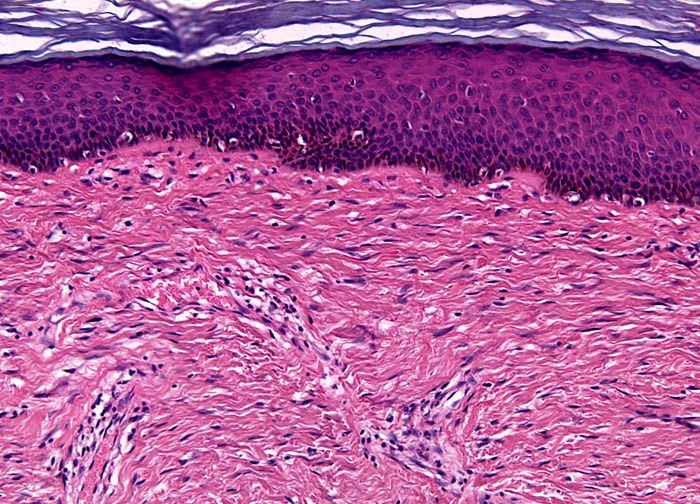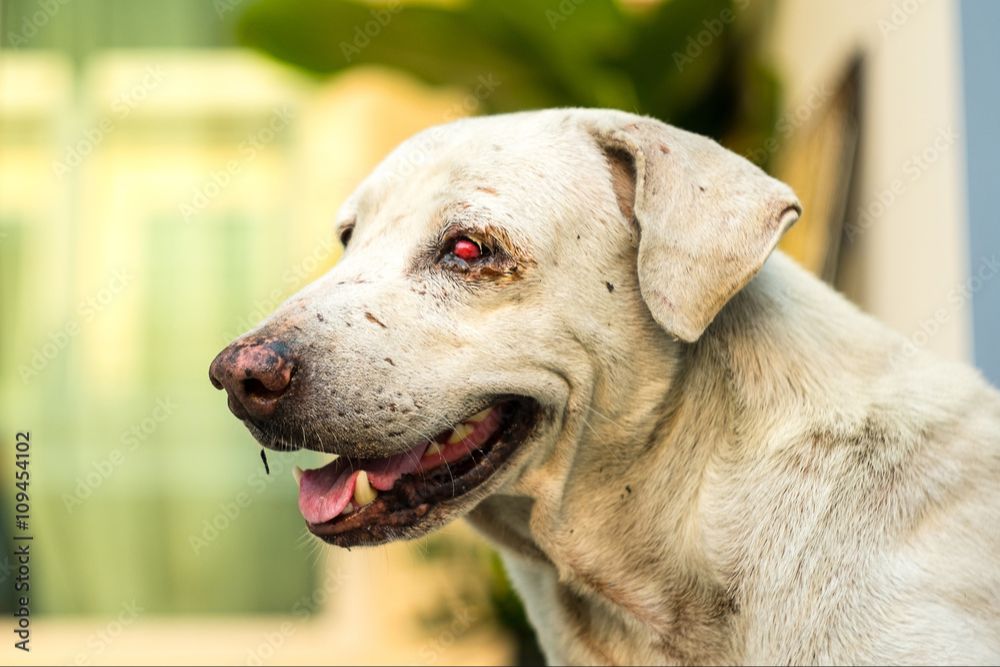Introduction
Dog bites are unfortunately a common occurrence, with over 4.5 million dog bites every year in the United States alone. While most dog bites are relatively minor, some can cause severe lacerations and serious scarring. Facial bites in particular often require medical treatment and can leave permanent scars. The emotional trauma of a dog attack can also be significant, especially for children.
Scarring from dog bites is a common concern, especially on visible areas like the face and neck. The appearance of bite scars results from the depth of the wound, amount of tissue damage, infection risk, location on the body, and care of the injury site. While no two scars are exactly alike, understanding the various factors that affect scarring can help individuals know what to expect after a dog bite. Proper medical treatment is crucial for minimizing lasting marks.
Causes of Dog Bites
There are several common reasons why dogs may bite humans:
Aggression
Aggressive behavior is one of the most common causes of dog bites. Dogs may bite out of territorial aggression when they feel their space is being invaded. They can also bite due to dominance aggression if they view humans as competition. Predatory aggression may cause some dogs to bite, particularly if they are provoked by quick motions from humans that trigger their prey drive. Additionally, dogs may show fear-based aggression and bite when feeling threatened or anxious (AVMA).

Fear
Dogs may bite out of fear or self-defense.Surprising a dog, approaching them rapidly, punishing them harshly, or forcing contact can cause them to feel fearful and provoked to bite (AKC). Fearful dogs are more likely to bite if they feel cornered with no escape route.
Excitement
Some dogs may nip and bite when over-excited during play. Running, shouting, wrestling, or engaging in tug-of-war games can rile up a dog too much, leading to excited biting. This is especially common with puppies and younger dogs.
Puppy Nipping
Puppies explore the world through their mouths and naturally nip and bite each other when playing. Young puppies may transfer this behavior to humans, particularly children, and gentle training is needed to curb this habit (Petfinder).
Severity of Injuries
Dog bites can cause a wide range of injuries depending on the size and strength of the dog, as well as the location of the bite on the body. Some of the most common types of injuries from dog bites include:
Puncture wounds
Puncture wounds occur when a dog’s sharp teeth penetrate deep into the skin, fat, and muscle tissue. They are one of the most common injuries from dog bites according to The 6 Levels of Dog Bites: Injury Classification Scale. Puncture wounds pose a high risk of infection since bacteria from the dog’s mouth can be pushed deep into the tissue. They often require antibiotics and thorough cleaning to prevent complications.
Lacerations
Lacerations are deep cuts in the skin caused by a dog’s teeth tearing at the flesh according to Types of Dog Bite Injuries. Lacerations can damage nerves, muscles, and tendons depending on their depth and location. Facial lacerations may require plastic surgery to repair torn skin, muscles, nerves, and blood vessels.
Crushing injuries
Crushing injuries are caused by the strong biting and shaking force of a dog’s jaws. This can crush bones, tear apart joints, and damage nerves and blood vessels. Crushing injuries often require orthopedic surgery to stabilize broken bones and repair other structural damage.
Scar Formation
After an injury, the wound goes through several stages as part of the healing process. During the maturation phase, collagen production peaks and the new tissue becomes more organized to form a scar 1. Collagen is a structural protein that gives strength and structure to skin. An overproduction of collagen can lead to prominent scarring.

Several factors influence how much scarring occurs, including the size and depth of the wound, blood supply to the area, age, genetics, and skin color. Deeper wounds that severely damage the dermis layer of skin are more likely to scar. The face and neck areas in particular tend to scar more due to their abundant blood supply 2.
Types of Scars
Dog bites can leave several types of scars depending on the severity of the wound, location on the body, and how the wound heals. Some of the most common types of scars from dog bites include:
Hypertrophic Scars
Hypertrophic scars are raised, red scars that remain within the boundaries of the original wound. They form when there is excessive collagen production during healing. Hypertrophic scars often look bumpy and lumpy. They are more common on the shoulders, neck, and other areas with tension or movement that can disrupt healing [1].
Keloid Scars
Keloids are a more severe form of raised scars. Like hypertrophic scars, they result from excessive collagen production. However, keloids grow beyond the original wound boundaries. They can grow quite large over time. Keloids are more common in certain ethnicities and on the chest, shoulders, cheeks, and ears [2].
Atrophic Scars
Also called depressed or pitted scars, atrophic scars look like little divots or holes in the skin. They form when there is insufficient collagen production during healing. These scars are sunken rather than raised. They often look like a crater or indentation in the skin [2].
Contracture Scars
Contracture scars tighten the skin, limiting mobility and flexibility. They form when the wound healing process pulls the skin tightly together. These scars tend to be rigid and stiff. Contracture scars are more likely on joints like the neck, armpits, and elbows [3].
Treating the Wound
Proper treatment of dog bite wounds is critical to prevent infection and promote healing. The first step is to clean the wound thoroughly with mild soap and warm running water to remove saliva, dirt, and debris (Mount Sinai). Applying pressure with a clean cloth can help stop bleeding.
Many doctors recommend antibiotic ointments or creams for dog bites that do not require stitches, as dog mouths contain bacteria that can cause infection. Antibiotics may also be prescribed, especially for deep puncture wounds (Thibault 2018).
Suturing dog bite wounds is controversial, as the puncture-type wounds caused by their teeth can trap bacteria inside. Most minor bites are therefore left open to drain. Sutures may be used for very severe bites to reapproximate tissue, but the wound will also be left open for drainage (VCA Animal Hospitals).
Minimizing Scars
Proper wound care is crucial for minimizing scarring after a dog bite. The American Academy of Dermatology recommends gently cleansing the wound daily with mild soap and water, applying antibiotic ointment, and keeping the wound moist with ointments or silicone sheets. Silicone gel sheets have been clinically proven to reduce scarring by keeping the wound hydrated and soft. One study found silicone sheeting decreased scar thickness by an average of 19% (https://skinlaseronline.com/dog-bite-get-rid-scars/). Laser therapy is another effective treatment for reducing the appearance of bite scars. Ablative and non-ablative lasers work by resurfacing the top layers of skin and stimulating new collagen production. Multiple laser sessions may be required to achieve optimal scar improvement.
![]()
Surgical Scar Revision
For severe scarring from dog bites, surgical scar revision may be an option to improve the appearance and texture of the skin. This involves surgical procedures by a plastic surgeon or dermatologist to remove or improve the scar.1
Some common surgical techniques include:
- Excision – The scar tissue is surgically removed and the edges of healthy skin are stitched together. This reduces the size of the scar and makes it thinner and less noticeable.
- Skin grafts – Healthy skin from another area of the body is removed and grafted over the scar to provide a smoother appearance and texture. The skin is often taken from behind the ear where scarring is less noticeable.
- Dermabrasion – The outer layers of the scarred skin are removed to expose smoother layers underneath. It involves sanding down the skin with a specially designed rotary abrasion tool.
Surgical scar revision procedures require anesthesia and recovery time. They carry risks of infection, bleeding, swelling, pain, and recurrence of scarring. Multiple procedures may be needed for optimal results. Patients should discuss the pros and cons with their doctor to determine if surgery is appropriate for their situation.
With surgical scar revision, significant improvement is often possible for severe dog bite scars. While the scar may not disappear completely, surgery can make it flatter, smoother, and less noticeable.2 This can restore both appearance and function to the affected area.
Living with Scars

A dog bite scar can leave both physical and emotional scars on a person. While the physical scar eventually fades over time, the psychological impact can linger for years. Studies have found that facial scars in particular can lead to anxiety, depression, and reduced self-esteem.
Children are especially vulnerable to teasing and bullying over visible scars. This can impact their confidence and self-image at a crucial developmental stage. Even minor scars may make someone overly self-conscious about their appearance. Support from family and mental health professionals can help manage these concerns.
“Scars from dog bites have lasting psychological effects like poor self-image and anxiety”, according to research from the National Institutes of Health (https://slaterzurz.com/scars-from-a-dog-bite-can-have-lasting-effects-on-victims/). The emotional trauma of an attack can also contribute to lasting impact on mood and mental health.
While the scar may fade, coming to terms with the experience takes time. Connecting with others who have been through similar trauma can provide emotional support. Seeking counseling or joining a support group may help some manage feelings of depression or low self-worth.
Conclusion
In summary, dog bite scars can be permanent, but with treatment most people can minimize the long-term appearance. The severity of the original wound plays a big role in determining how noticeable a scar will be. While some scarring is likely after a serious bite, prompt medical care and wound closure techniques can help reduce scarring. Various creams, laser treatments, steroid injections, and even surgical scar revision are options for improving the look of a scar over time. While scars serve as a reminder of the event, they don’t have to be a source of distress if properly treated. With time and care, most people can reduce the intensity of scars and feel comfortable in their skin again.